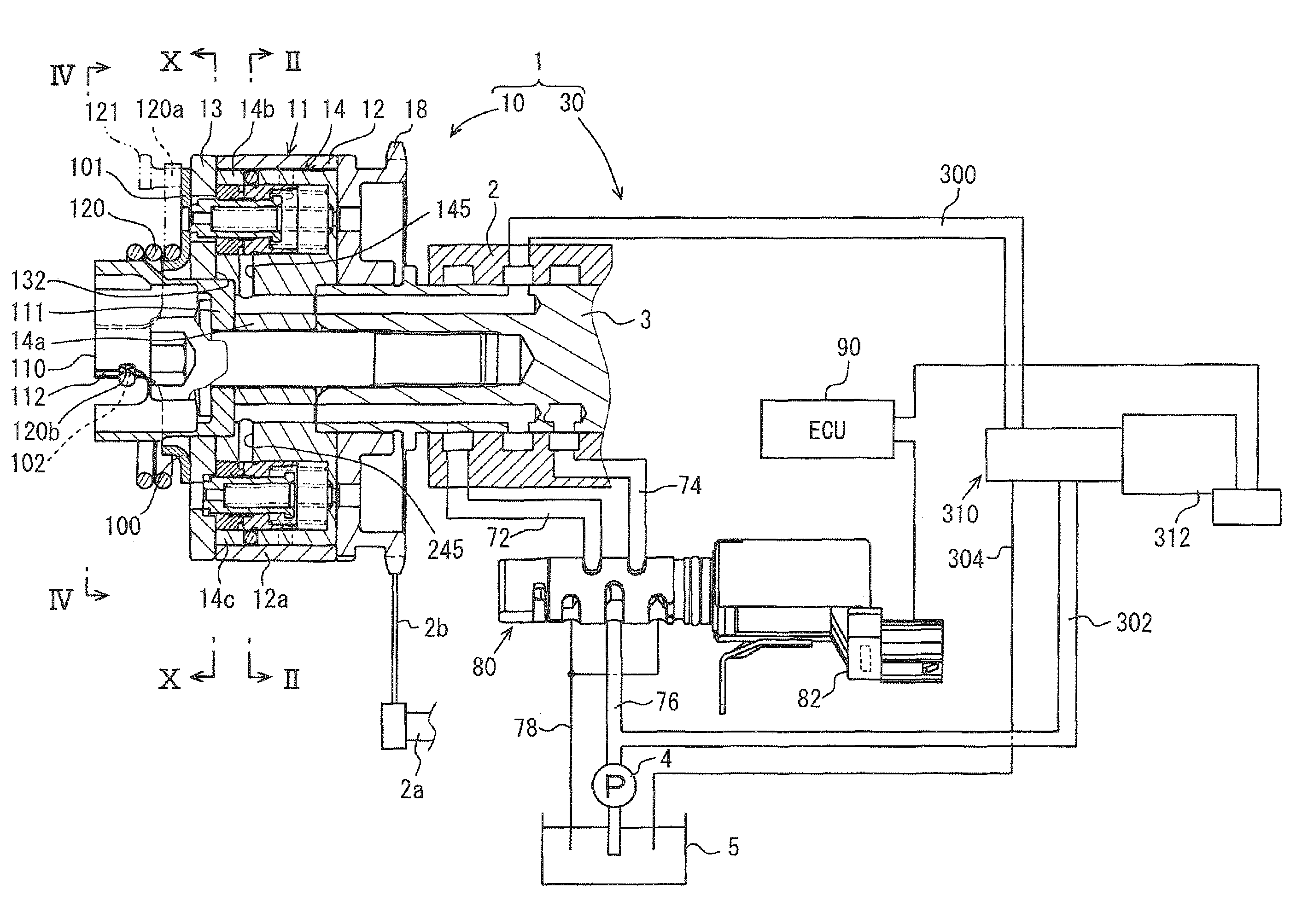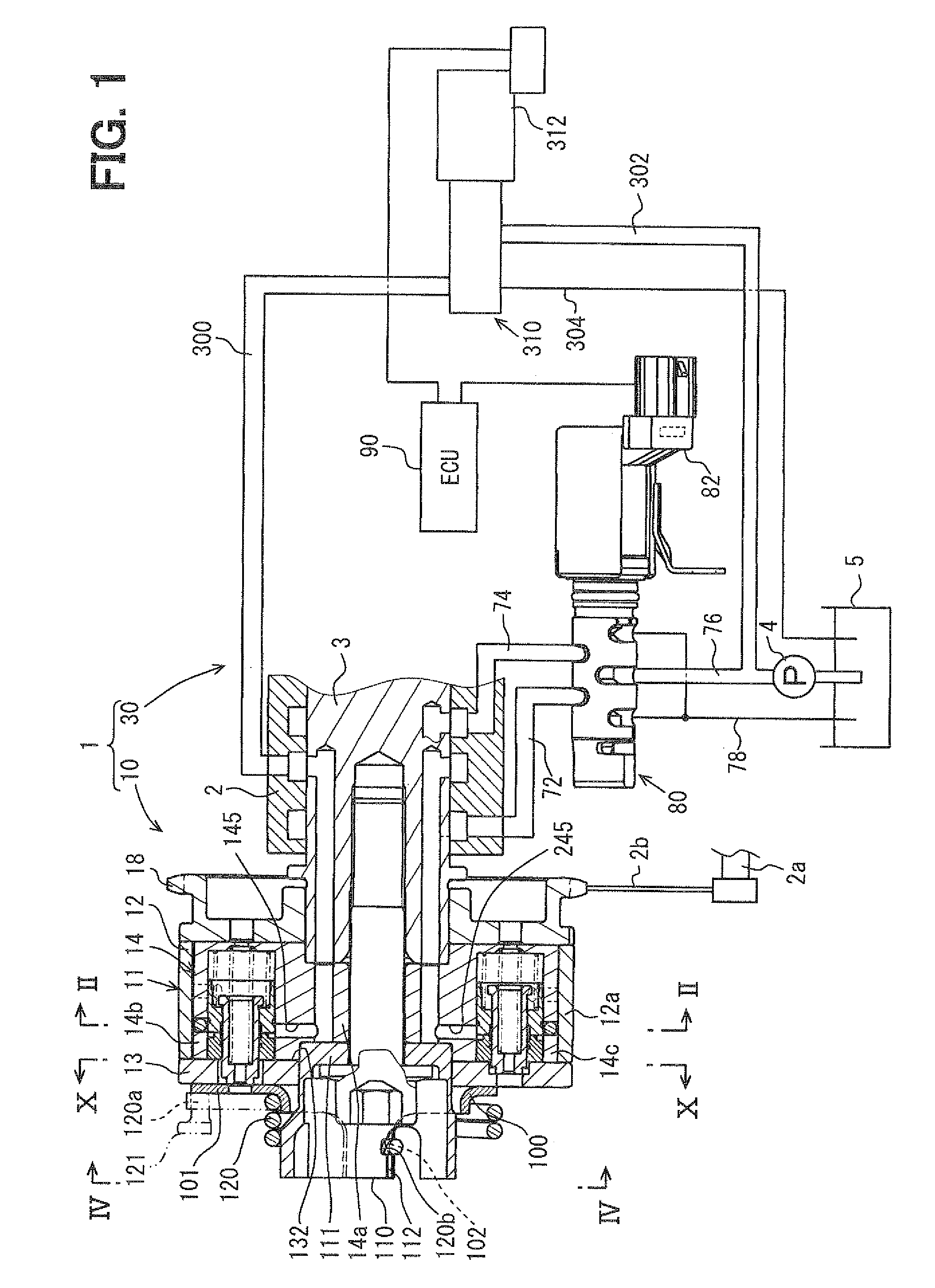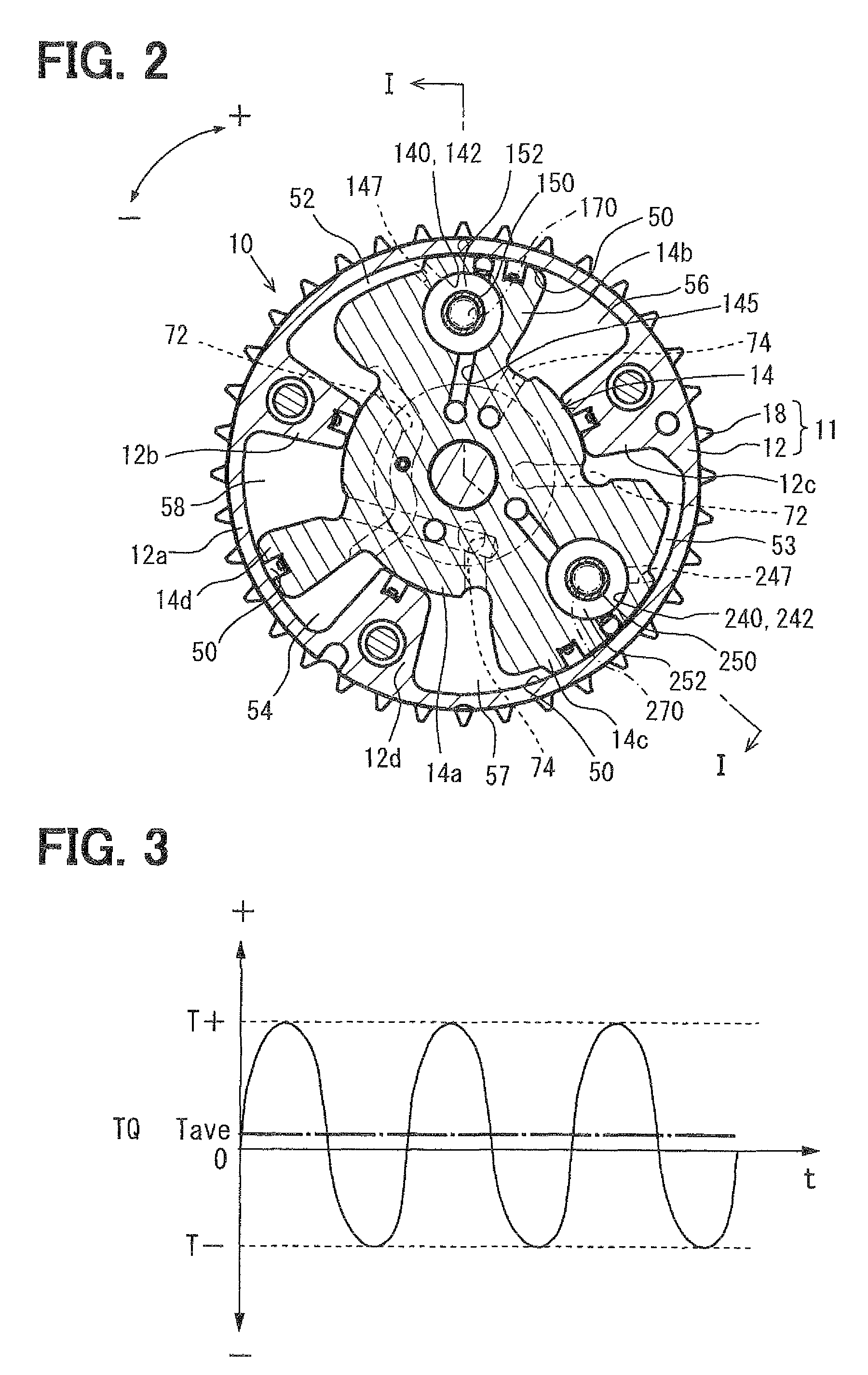Valve timing control apparatus
a timing control and valve technology, applied in mechanical devices, valve arrangements, machines/engines, etc., can solve the problems of reducing the moving speed of the regulation pin, affecting the operation of the valve, and reducing the efficiency of the valve, so as to suppress the leakage of hydraulic fluid, facilitate the introduction of atmosphere, and prevent communication
- Summary
- Abstract
- Description
- Claims
- Application Information
AI Technical Summary
Benefits of technology
Problems solved by technology
Method used
Image
Examples
first embodiment
[0084]Hereinbelow, the first embodiment of the present invention will be described based on the drawings. FIG. 1 shows a valve timing control apparatus 1 according to the first embodiment of the present invention. The valve timing control apparatus 1 is applied to a vehicle internal combustion engine 2. The valve timing control apparatus 1 controls valve timing of an intake valve serving as a “drive gear”, which is opened and closed by a camshaft 3, through oil serving as “hydraulic fluid” supplied from a pump 4 serving as a “supply source”.
[0085](Basic Structure)
[0086]Hereinbelow, the basic structure of the valve timing control apparatus 1 will be described. The valve timing control apparatus 1 has a drive unit 10 provided in a transmission system to transmit engine torque from a crankshaft 2a of the internal combustion engine 2 to the camshaft 3, and a control unit 30 to control operation of the drive unit 10.
[0087](Drive Unit)
[0088]As shown in FIGS. 1 and 2, a housing 11 has a sh...
second embodiment
[0185]As shown in FIGS. 22 to 25, the second embodiment of the present invention is a modification of the first embodiment. In the second embodiment, peripheral grooves 2157 and 2257 formed in first and second sub regulation members 2152 and 2252 are not opened to the space located on the side of the first and second sub regulation members 2152 and 2252 opposite from the cover member 13. As a result, communication between the peripheral grooves 2157 and 2257 and the communication chambers 148 and 248 is substantially prohibited. Further, communication between the first and second advance communication holes 147 and 247 and the corresponding communication chambers 148 and 248 is substantially prohibited by the first and second sub regulation members 2152 and 2252 at any position. Further, communication between first and second retard communication holes 2147 and 2247 and the corresponding communication chambers 148 and 248 is substantially prohibited by the first and second sub regul...
third embodiment
[0190]As shown in FIGS. 26 to 29, a third embodiment of the present invention is a modification of the second embodiment. In the third embodiment, atmospheric holes 3137 and 32367 which are always atmospherically opened and which always communicate with the communication chambers 148 and 248 respectively communicate with the first and second through holes 149 and 249 in the entire region of the rotational phase including the lock phase.
[0191]Further, the first and second sub regulation members 3152 and 3252 of the third embodiment form multiple first and second ventilation passages 3160 and 3260 in a cylindrical hole shape through the bottoms of the peripheral grooves 2157 and 2257 in a radial direction to communicate the peripheral grooves 2157 and 2257 with the communication chambers 148 and 248 respectively in a circumferential direction. Note that the first and second advance communication holes 147 and 247 and the first and second retard communication holes 2147 and 2247 face a...
PUM
 Login to View More
Login to View More Abstract
Description
Claims
Application Information
 Login to View More
Login to View More - R&D
- Intellectual Property
- Life Sciences
- Materials
- Tech Scout
- Unparalleled Data Quality
- Higher Quality Content
- 60% Fewer Hallucinations
Browse by: Latest US Patents, China's latest patents, Technical Efficacy Thesaurus, Application Domain, Technology Topic, Popular Technical Reports.
© 2025 PatSnap. All rights reserved.Legal|Privacy policy|Modern Slavery Act Transparency Statement|Sitemap|About US| Contact US: help@patsnap.com



